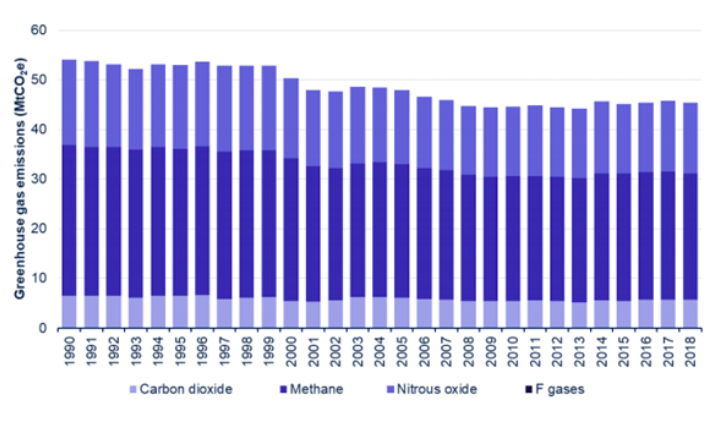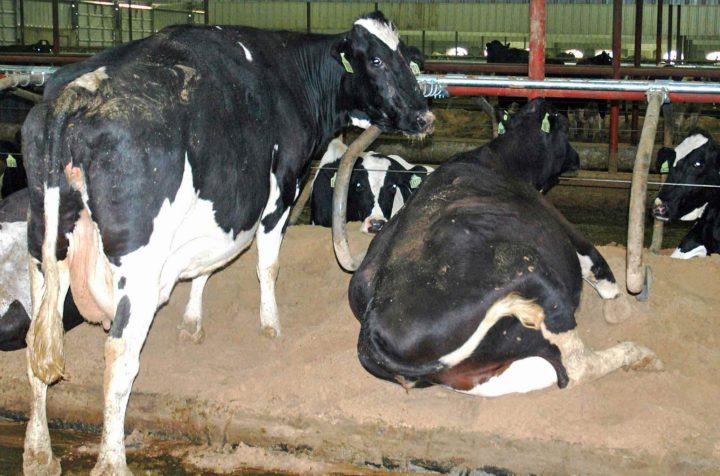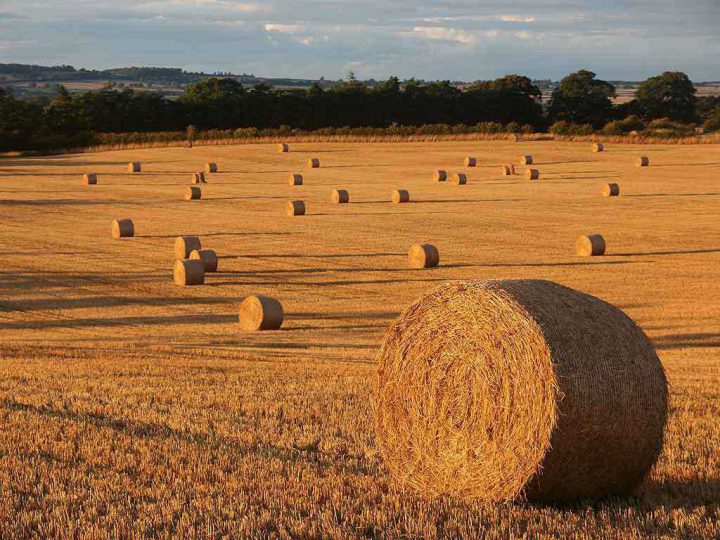Net zero: farming and the countryside
Farming and wider land use will be crucial in a net zero economy.
By George Smeeton
Share
Last updated:
Agricultural sources of greenhouse gases
Farming produces significant amounts of the greenhouse gases carbon dioxide, nitrous oxide and methane. There was only a 1% decline in UK agriculture emissions between 2017 and 2018, and before that emissions were relatively stable year on year, or in some years, actually rose.
Carbon dioxide from the atmosphere is absorbed by growing plants, stored as organic matter in the soil and gradually released as it decays. It is also produced in the operation of farm machinery, and when adding lime to improve acidic soils.
Nitrous oxide is produced in soil from the breakdown of synthetic fertilisers and animal manure. Some methane also comes from manure, but the main source is ‘enteric fermentation’, the gas belched out by cattle and other ruminant animals as they digest grass. Only about 10% of the methane produced by livestock comes out of the other end.
Methane is UK agriculture’s predominant greenhouse gas, making up about 56% of the total.

The 16% decrease in the emissions from agriculture since 1990 have been attributed to a decline in animal numbers as well as a decrease in synthetic fertiliser use. As the greenhouse gas produced most by farming, the most effective route to reducing the emissions from agriculture further would be limiting the amount of methane they produce when converting the grass they eat into meat and dairy products.
Efficiency of production
This conversion process can be made more efficient by intensification of animal production. But while keeping cattle permanently indoors allows greater control over inputs such as food and veterinary medicines, and more effective recycling of waste products (methane and dung), there is resistance among many consumers to the idea that cattle should not have the opportunity to graze outdoors.

Meanwhile, science-based options for boosting production such as the growth hormone bovine somatotropin are banned in the EU on animal welfare grounds. Some other options such as including seaweed in cattle feed show optimistic results, decreasing methane emissions from cattle by 80% by causing a chemical reaction in the cow’s stomach without affecting the meat or dairy.
Still more are at an early stage of development; for example, there are ongoing studies which aim to activate genes to boost the animals’ resistance to disease or increase productivity. Genetic improvement through selective breeding is thought to have improved milk production by 67% from the 1960s to 2005, and further genetic therapies could be capable of improving the feed efficiency of cattle even further.
Reducing emissions from arable land and grassland
About 84% of the UK’s nitrous oxide emissions come from soil, mainly due to the breakdown of fertilisers and animal manure used to increase crop productivity. Research is helping farmers to calculate more accurately the amount of nitrogen-based fertilisers needed, which in turn requires development of technologies to automatically monitor the nitrogen content of soil.
Other studies are looking at using biochar – charcoal particles produced from processed crop materials – to increase the carbon dioxide-carrying capacity of the soil.
Meanwhile, ‘no-till agriculture’ involving the planting of seed without ploughing has attracted interest from arable farmers in some countries as a potential way to encourage sequestration of carbon dioxide through organic material in soil, while also preventing release of valuable nitrogen and phosphate resources.
Cutting food waste
Another simple method to reduce emissions would be to slash the volume of food wasted. Household food waste costs over £19 billion a year in the UK, emitting over 25 million tonnes of greenhouse gases. The food industry is supporting a voluntary initiative, the Courtauld Challenge, aimed at cutting waste by 20% by 2025 (equivalent to a reduction from 165kg to 125kg of food wasted per person).
More efficient use of the food we produce could allow more land to be set aside for reforestation, conservation and leisure activities. The CCC model that a fifth of UK agricultural land needs to shift to tree planting, energy crops and peatland restoration to realise net zero by 2050.
Changes in diet
Per-capita consumption of red meat is falling across the developed world, with more people eating lower-carbon white meat products such as chicken and adopting vegetarian or plant-based diets. In the UK, the amount of beef and lamb eaten per person has fallen by more than 15% over the past decade.
However, the average Briton still eats about 70g of animal protein per day, more than twice the amount recommended by public health experts. Eating more fresh fruit and vegetables and reducing animal protein consumption by 50% compared to current levels could help reduce emissions to a near-zero level and is closer to the Government’s healthy eating guidelines.

Barriers to change
All governments struggle to control greenhouse gas emissions in agriculture, due largely to the complex nature of the industry. Changes in, say, transport or energy policy will usually require action by a few large corporations. But food production is the work of thousands of individual farmers each with their own unique circumstances.
To this end, the CCC recognise that “it is difficult to reduce agriculture emissions to near-zero given the inherent biological processes and chemical reactions arising from crops, soils and livestock”.
Food production is an increasingly international business. Britain imports roughly 50% of all the food it consumes including around 45% of its animal protein but also exports nearly a quarter of its meat and dairy produce. So national policies to encourage farmers to reduce emissions must take account of this trade, ensuring that emissions are not simply exported.
New opportunities
Around 40% of farms produce some renewable energy, helping them to diversify their income. Further investment into anaerobic digestion of farmyard waste could create biomethane to replace some fossil fuel gas. Bioenergy crops could also be used to generate electricity as well as capturing atmospheric carbon, so generating ‘negative emissions’ (see our Negative Emissions briefing).
There is potential growth in the forestry industry, with the Government’s climate change advisory committee proposing that 70,000 hectares of land (1 ha is roughly the size of a rugby pitch) be assigned to afforestation projects in Britain by 2025.
Wood could become a more widely used construction material as it helps to lock up the carbon it contains for decades, again generating ‘negative emissions’.
Share
